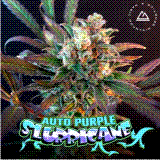 The_Hatter
The_Hatter- Mensagens : 739
Data de inscrição : 18/12/2013
tipo de cultura : Terra
 Dab Tech: Low-Temp Dabs and the Anatomy of a Flame
Dab Tech: Low-Temp Dabs and the Anatomy of a Flame
Qua Jan 14, 2015 1:11 pm

Nail temperature and flame heat are always topics for discussion amongst dabbers, and no one ever seems to agree. The way you do a dab is certainly a matter of taste, but a few facts given here about the anatomy of a flame and re-hot objects should clarify some of the mystery.
A flame has several parts to it, and knowing which is which will help you dab more efficiently. You don’t want to wait too long for the nail to heat up, or coat it with nasty butane residue. The blue cone orprimary combustion zone is the bright blue part that may seem like the hottest part of the flame, but it’s not. The secondary combustion zone is the bigger, lighter blue part of the flame that surrounds the blue cone. Right between the two, or about a quarter inch in front of the tip blue cone, is the hottest part of the flame called the interzonal region.
Crème brûlée (“burnt cream”) is a delicious custardy French dessert whose top layer of sugar gets torched to make it crispy. A lot of torches people dab with are really made for crème brûlée and other burnt delicacies. Anyone who has ever prepared one knows that you can’t burn it with the blue cone of the flame or the dessert will taste like gas, because combustion isn’t finished yet at that stage.
Welders and chemists alike will tell you that using the interzonal region of the flame to heat up your nail has two major advantages: faster heating, and less combustion by-products.
While we’re on the subject of hot nails, how hot should your nail be? Is glowing red-hot really too hot? Yes, definitely.
All materials will emit light when heated enough, and it will be the same color no matter what the material because of a theory in physics about black body radiation. A blood-red glow indicates 1075 °F, while faint red indicates 930 °F. Since ideal vaporization temperatures for cannabis oil are between 300 °F and 400 °F, any noticeable glow means your nail is too hot and your oil will get burnt.
By doing a dab in the dark, or in low light, you’ll notice the red glowing even more, but a coating of oxide or soot might stop you from noticing a faint glow. Since titanium looses heat pretty fast, soon after the faint glow disappears your nail should be at the sweet spot.
One of the reasons ceramic nails have fame for preserving flavor is because ceramic takes much longer to absorb enough heat to get red hot. A red-hot ceramic nail is at the same temperature as a red-hot titanium nail, but you’ll have to torch the ceramic a lot longer than the titanium, because ceramic has a higher specific heat.
Since ceramic takes so much longer than titanium to get red hot people rarely torch it for that long, and dabs off ceramic are consistently cooler. Similarly, ceramic’s heat-holding capability means your oil is more likely to vaporize entirely despite being at lower temperature.
It’s said that low-temp dabs are better for preserving terpenes; in fact, they’re better for preserving every part of the oil, including THC. Terpenes and cannabinoids actually vaporize in the same range of temperatures, meaning the flavor gain of doing a low-temp dab is because you’re limiting combustion all together, and doing better at preserving every part of the oil.
Source: High Times

Permissões neste sub-fórum
Não podes responder a tópicos











